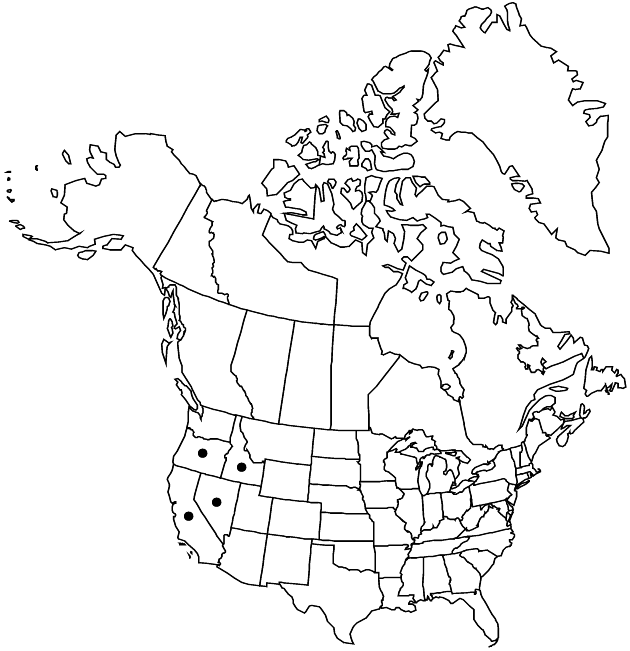Ancistrocarphus filagineus
Proc. Amer. Acad. Arts 7: 356. 1868.
Plants 2–10 (–14) cm. Stems usually 2–10, ascending to prostrate, sometimes 1, ± erect; branches mostly distal (sometimes absent). Leaves basal and cauline, sessile or obscurely petiolate, largest 8–16 (–28) × 2–3 (–4) mm, very unlike pistillate paleae; bases (of leaves or petioles) ± attenuate, 1-nerved, greenish, herbaceous, scarcely involucral. Heads in glomerules of 2–5 in ± cymiform arrays, 3.5–5 mm (excluding staminate paleae). Phyllaries usually 3–6, minute, ± equal, hyaline, unlike pistillate paleae, sometimes vestigial or apparently 0. Receptacles fungiform, 0.9–1.5 mm. Pistillate paleae: wings prominent, erect, ovate, ± plane. Staminate paleae 5, broadly lanceolate, 2.7–4.1 mm, surpassing pistillate; apices uncinate, terete, acuminate, cartilaginous, spinose. Staminate corollas actinomorphic, 1–1.5 mm, lobes (4–) 5 (–6), ± equal. Cypselae 1.4–2 × 0.6–0.9 mm, transverse bands 1, proximal, black.
Phenology: Flowering and fruiting mid Mar–late Jun.
Habitat: Open, dry or vernally moist slopes, flats, drainages, shallow rocky to deep sandy or clay soils (often over serpentine or basalt), sometimes disturbed sites (burns, road beds)
Elevation: 60–1900(–2100) m
Distribution

Calif., Idaho, Nev., Oreg., Mexico (Baja California)
Discussion
Ancistrocarphus filagineus occurs nearly throughout the Californian Floristic Province inland from the immediate coast; in the south, it stops at the western fringes of the Mojave and Sonoran deserts; farther north, it continues into the northern Great Basin and Columbia Plateau of Oregon, northern Nevada, and southwestern Idaho. The rigid whorl of inwardly-hooked staminate paleae holds tenaciously to clothing, skin, animal coats, even vehicle tires, providing an effective dispersal mechanism. It is surprising that it has not spread farther.
Plants of populations farther inland, on drier sites and/or in deeper sandy soils, tend to be more compact with leaves shorter, more rounded, and indument denser and whitish. Stylocline filaginea var. depressa has sometimes been misapplied to these unnamed forms. The two forms intermingle enough so as not to warrant formal taxonomic status.
Selected References
None.
